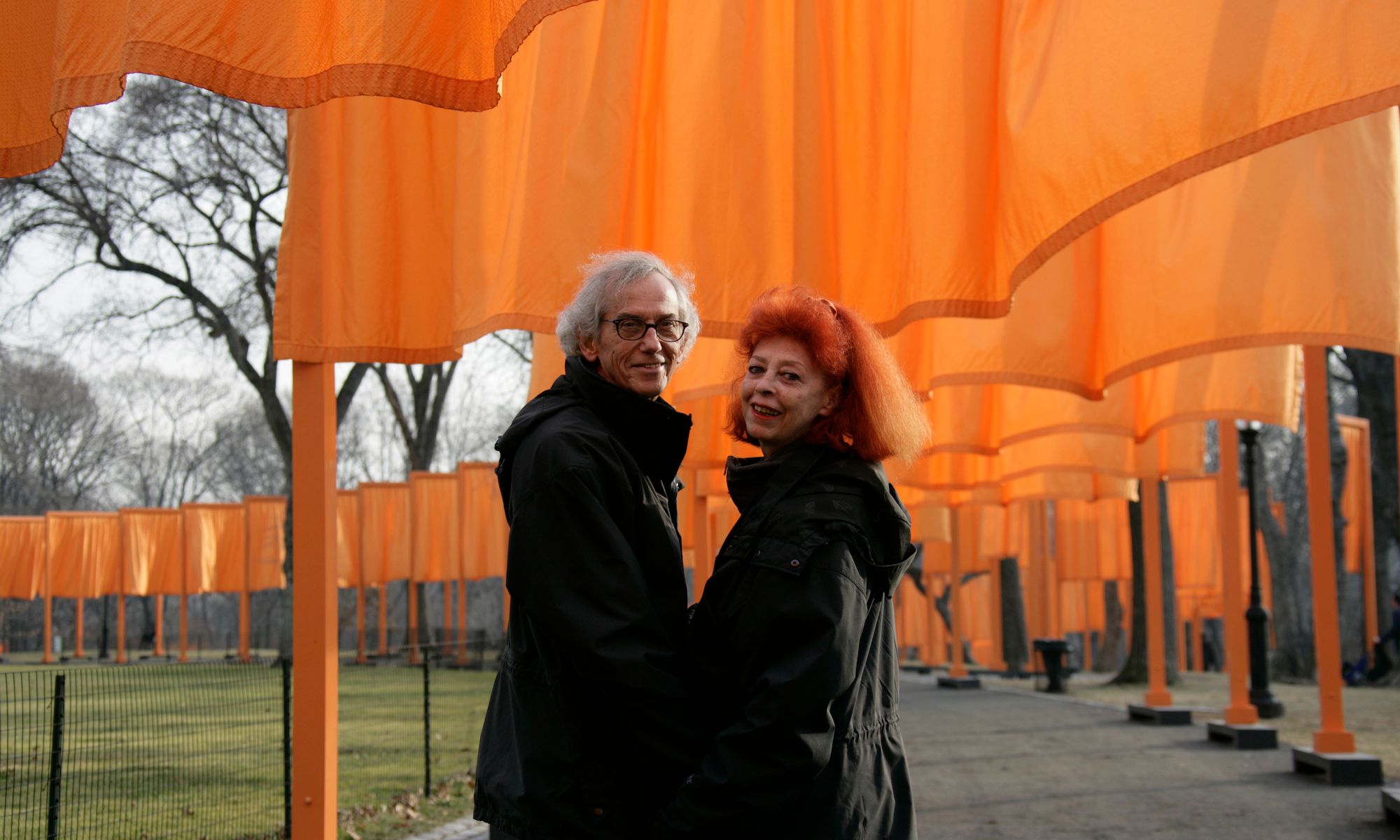Christo and Jeanne-Claude during the run of their work, The Gates, Central Park, New York City (1979-2005) Photo by Wolfgang Volz, © Christo
Like so many artists, Christo focused more on what was ahead and only somewhat on what should happen when he is no more. “He was planning to keep on living and doing more art projects,” says Karin Barkhorn, a lawyer in New York who has been involved in managing the estate of the artist, who died in May 2020 just two weeks shy of his 84th birthday.
Christo did have the foresight to plan for a foundation—the Christo and Jeanne-Claude Foundation, named after himself and his wife and artistic partner, who died in 2009—that would promote their legacy and even complete a project or two that was still in the works at the time of his death. The 12-member board of directors of this new foundation met formally for the first time on 21 September to flesh out what this organisation would be and do.
Among the foundation’s board members are Agnes Gund, the arts patron and president emerita of the Museum of Modern Art; Joel Mesznik, an investment banker and founder of Mesco; and Jonathan Fineberg, an art historian and art critic who wrote a book on Christo and Jeanne-Claude’s 2005 project in New York’s Central Park, The Gates.
The foundation’s assets are in the process of being amassed from the estate and consist of unsold artworks that date from the late 1950s to 2020, such as drawings, collages and lithographs, many of which specifically relate to the large projects, archival documentation about both sold and unsold pieces and projects, including invoices for materials for projects and permits from one or another government agency, as well as some materials used in various projects (for instance, pieces of fabric and posts from The Gates), and the building on Howard Street in Manhattan’s Soho district where the artists lived and worked and from which the organisation will now be run. The combined value of those assets are expected to be between $150m and $200m, according to Barkhorn, who was named president of the Foundation’s board.
To be decided is “what to do with the art collection—keep it, donate it, sell it”, says Jonathan Henery, one of the artists’ nephews who is a board member of the foundation and otherwise takes care of administrative tasks, which includes authenticating artworks. “Christo wanted a lot of his work to be shared with the world,” Henery says, so some pieces will be gifted to museums, “but we still have works to sell and we still have demand, although we don’t want to flood the market. We want to keep some for loans for exhibitions.” Plenty of decisions await the board moving forward, and the amount of money that can be raised from the sale of items will determine what the foundation will be able to accomplish.
Christo and Jeanne-Claude in Japan in 1988 Photo © Wolgang Volz
Barkhorn says that “our primary concerns are preserving the artworks and the archives, perpetuating Christo’s legacy, finding museums that would be a good fit for his work and, maybe, if there is money left, to make grants to artists or to museums”. Among the potential goals is to create a study center for the artists’ works at the Howard Street building. She adds, “That would require some renovation to make that happen.”
Of Christo and Jeanne-Claude’s projects that were not realised during their lifetimes, one was completed the year after his death, L’Arc de Triomphe, Wrapped in 2021, which was managed by another of the artists’ nephews, Vladimir Yavachev. One remaining unrealised project by the duo is in the planning stages: The Mastaba, Project for the United Arab Emirates, a flat-topped pyramid made up of 410,000 oil drums—which would make it, reportedly, the largest sculpture on earth—to be built in Abu Dhabi. “The project for Paris was already permitted and materials ordered by the time of Christo’s death,” Henery says. “The Mastaba is also fully engineered, the possible locations decided and all aesthetic decisions made during the artists' lifetimes.”
Christo established the Christo and Jeanne-Claude Foundation under a different name two years before his death, although it never “did anything”, Barkhorn says, and only broadly identified its goals as to “be operated, exclusively for charitable, educational, literary and scientific purposes… including, but not limited, to support one or more not-for-profit organisations operating an art museum”.
Most artists’ foundations serve the posthumous interests of the artists, as trustees and administrators arrange exhibitions of their work, prepare a catalogue raisonné, inventory work and make documents and archival materials available to scholars. The Henry Moore Foundation in England, for instance, was set up in 1977 to “advance the education of the public by promoting their appreciation of the fine arts, particularly the work of Henry Moore”. The Aspen Institute, a policy research organisation in Washington, DC, has identified 433 artist-endowed foundations with $7.66bn in aggregate assets, according to a survey it conducted in 2018. Between 2011 and 2015, those assets increased 120% in value.

